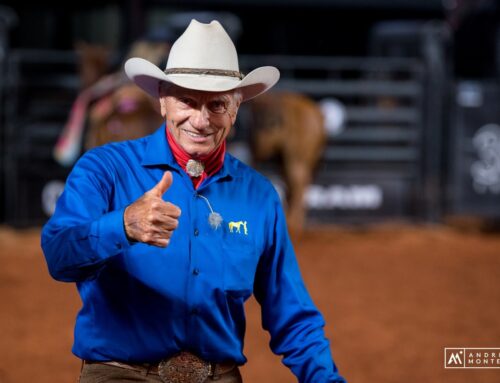“Whipping the horse and producing pain in order to achieve ANY given goal is wrong, in my opinion.” Monty Roberts
August 26, 2019 Solvang, California:
The count was 29 horses dead at Santa Anita this season and many people blamed the unusually heavy rainfall for the problems this year. Sealing the track over and over is the usual means to preserve the surface during rainfall, but sealing it over and over hardens the pad underneath, admits Jim Cassidy, president of the California Thoroughbred Trainers. This may have been one factor in a perfect storm that brought the attention of the world to Santa Anita.
The Stronach Group which owns Santa Anita brought up other issues to consider; race day medications were also of concern. Attention was being turned on the trainers who some accused of using drugs to run unfit horses on race day. Horses were being run on Lasix, a drug which has been said to mask other performance enhancing drugs.
At the 67th Annual Round Table of The Jockey Club of the United States August 11, 2019, the recommendation to the American Thoroughbred industry was to unite on several measures from banning the use of the whip “for encouragement” to uniting on the drug policies in American racehorses and bringing interference rules in racing in compliance with worldwide practices. But recommendations are not mandates and the decisions are made by the regulatory authorities in the 38 states that sponsor Thoroughbred racing.
The outright endorsement by the Jockey Club of banning the use of the whip during races was a notable move toward listening to public opinion that causing pain to the flight animal was not only unfavorable to the fans watching, but gave the impression to the public that the horse didn’t want to run.
Stuart Janney, Chairman of The Jockey Club told the gathering at the annual conference, “Consumer research conducted earlier this year indicated that making penalties stricter for violation of rules regarding use of the riding crop received the most support among current and potential fans. No horse or rider will be disadvantaged by the rules, and we will still have fair winners.”
Over 20 years ago, horse trainer and animal behaviorist, Monty Roberts began to publish articles whose purpose was to point out how whips were not only inhumane for horses but also counterproductive; this from a trainer of Thoroughbred horses to notable owners such as Her Majesty Queen Elizabeth II. His logic and experience was noted in other countries such as Norway who listened and banned the whip. Other countries began to modify the whip or change the rules to lessen the use of the whip.
Roberts cited the behavioral problems caused when hitting the flight animal in his 2002 article on whips in racing here. After the 2008 tragedy at the Kentucky Derby with Eight Belles breaking down after the finish, Roberts wrote again to the industry to say that it would be a major step in the right direction to take whips out of racing, found here. Roberts believes that now is the time for the horse industry to show that it is doing everything in its power to protect horses. A major step in the right direction would be to take whips out of racing.
“I am so pleased that we are making this move,” responding to the US Jockey Club press release, “Someone recently said that we need to take this global. Let me tell you, they are way ahead of us in other countries. It’s certainly time that we take these measures, not only to protect our horses but to protect our own investments in the horses because it is healthier and better for our horses to get some of these measures out of their lives like race day medications. Race day medications gets us in far more trouble than it ever helps.”
“Where I stand is that whips cause interference. Whips cause the horses to change directions or adjust their directions so they get in the way of other horses. The bumping and the twisting of horses in the race occurs after the whips come out.”
“It is our tendency as humans to control things through force. The human species is smarter than that. We never do a good job of controlling things through force. We do a much better job when we guide and think it through and act in the absence of violence.”
“Horses love to run. They want to run. They are pulling on the reins to run. If they don’t want to run, they are not a race horse. The jockey doesn’t have to do that much to encourage the horse to run. And the horse that runs without strong encouragement is genetically a better horse to breed to or have babies from, so taking the whip away still leaves a winner and a loser. Who wants a winner that has to be whipped to get there? But in fact it doesn’t get them there. It’s a fallacy. We’ve been wrong all these decades. I started in 1963 to say that I am studying the behavior of horses and this is not the way we should be going. It is my pure hope that other factions don’t stop down this decision.”
The US Jockey Club meeting also brought in speaker Kim Kelly, chief steward of The Hong Kong Jockey Club, who put things in perspective by respectfully citing how the United States has fallen behind many countries in their practices. Hong Kong racehorses have the lowest loss rate at about 0.5 per 1,000 starts. Santa Anita had a death rate of 1.86 since the reforms, still above the US national average of 1.68 and more than double that of Del Mar last year (0.79) and significantly worse than Los Alamitos last year (1.06).
Another speaker, James L. Gagliano, The Jockey Club president and chief operating officer emphasized the need for uniting on consistent policies “if (Thoroughbred industry) stakeholders wish for it to be successful.”
Ada Gates, the first woman farrier in the United States to be licensed to shoe horses on the racetracks back in the 1970s, has lived and worked by the Santa Anita Racetrack for most of her life and she is hopeful. She deeply wants the regulatory authorities in the 38 states that sponsor Thoroughbred racing to, “Have a new, clean, honest look at racing. Fix it or go away, because the animal protection rights people are not going to stop standing at the gate of every race track in the country.”
Jockey Club Chairman Stuart Janney summed it up with “We should get our sport in shape to compete for the interest and support of the public. Most of us agree that there will be more changes in the next five years than we have seen in the last 50. I see our job at the Jockey Club as insuring the change, as it comes, will be for the better.”
Debbie Roberts Loucks
Coming June 21-23, The Movement 2020: understand the value of horses in people’s lives


